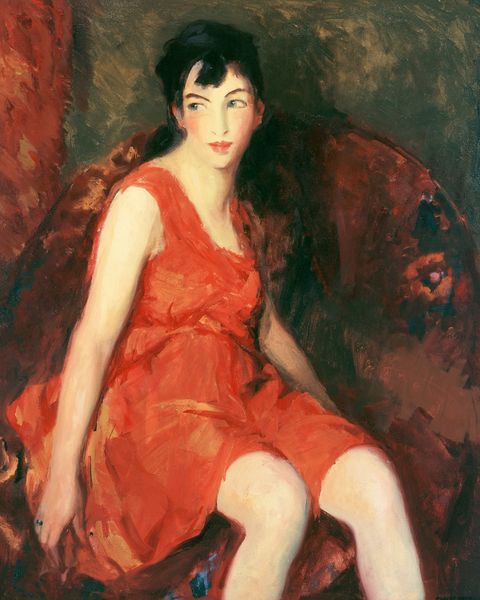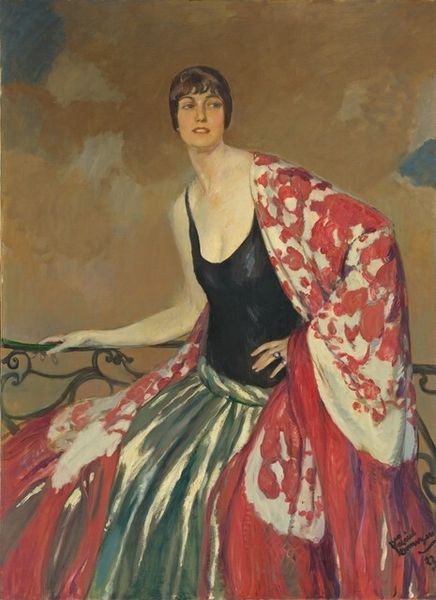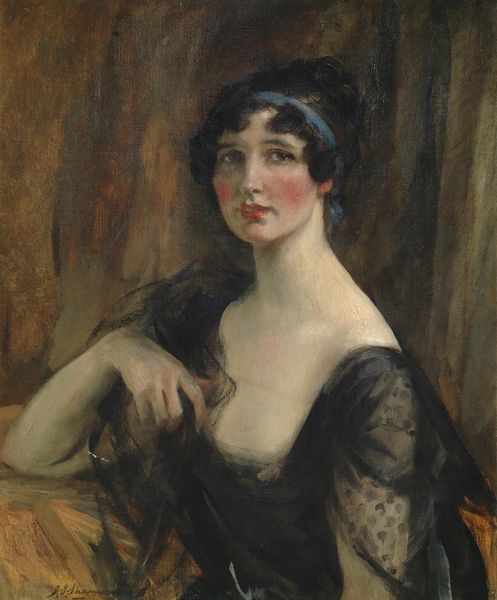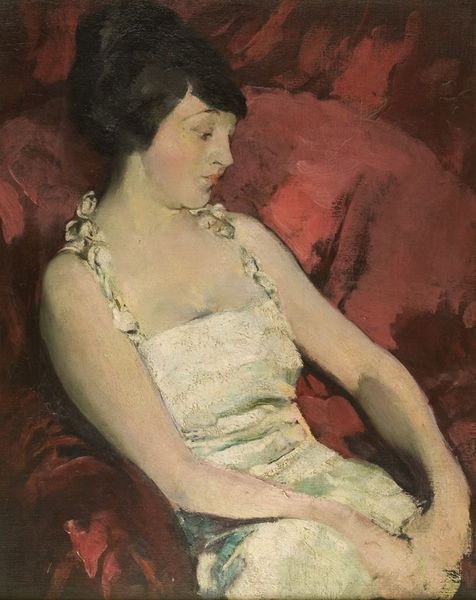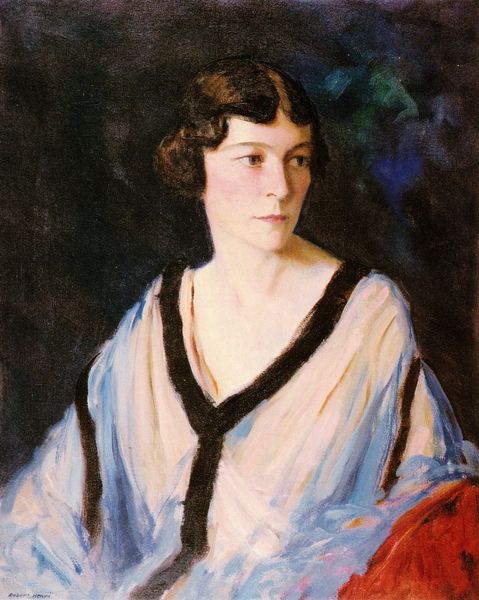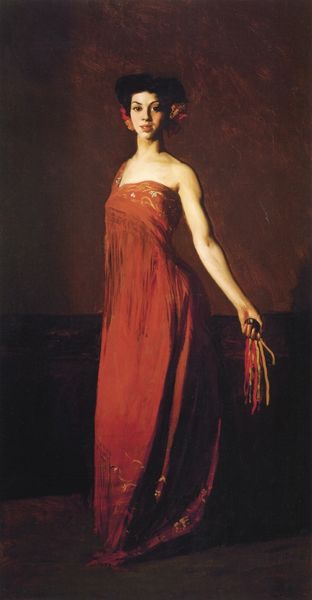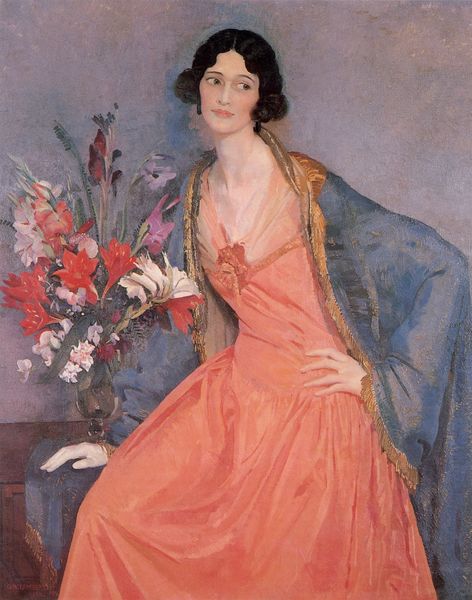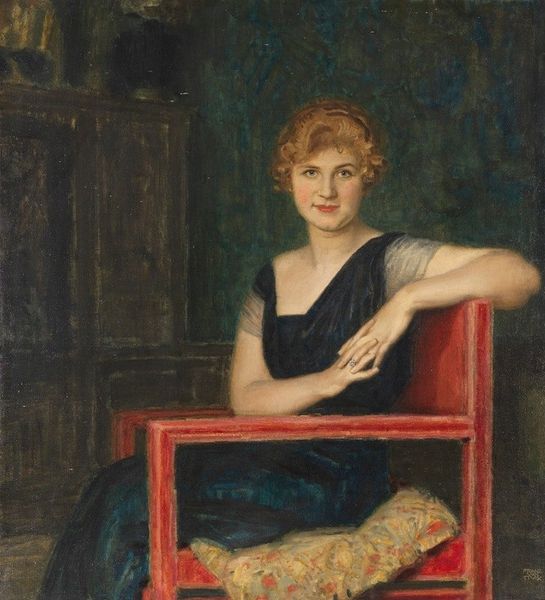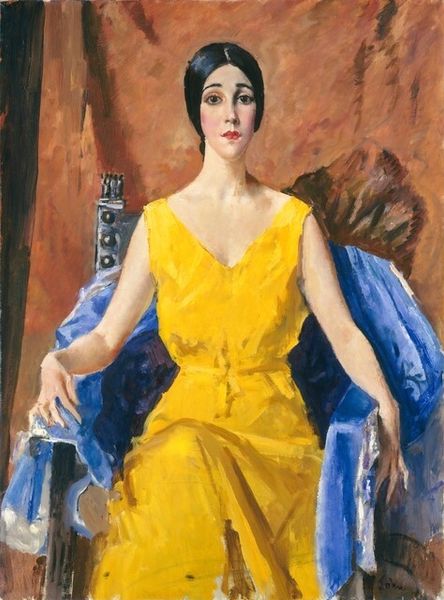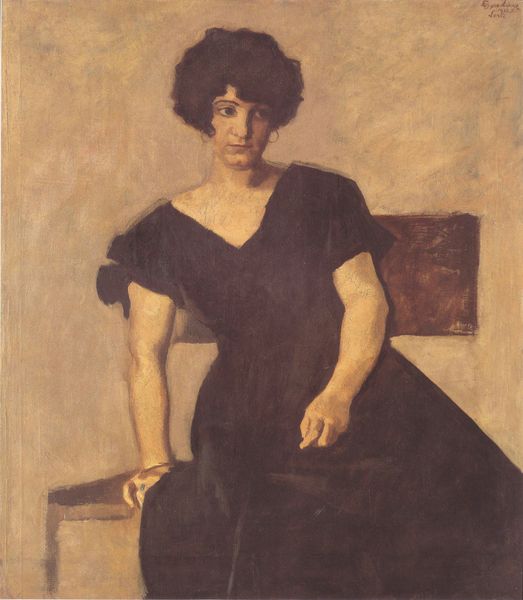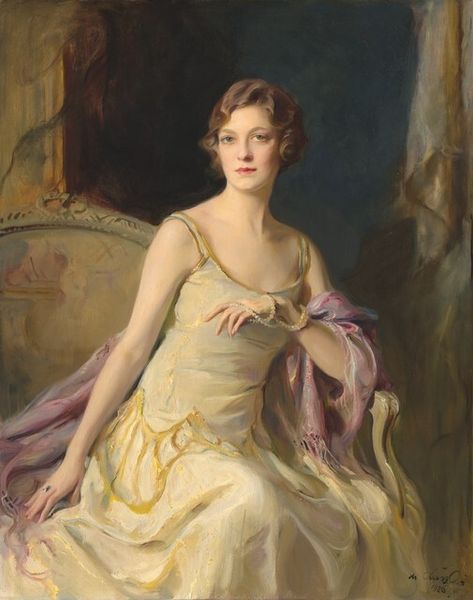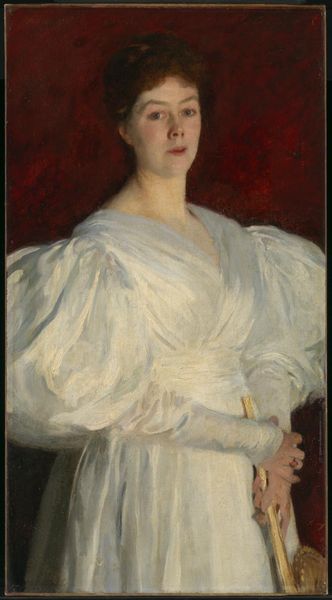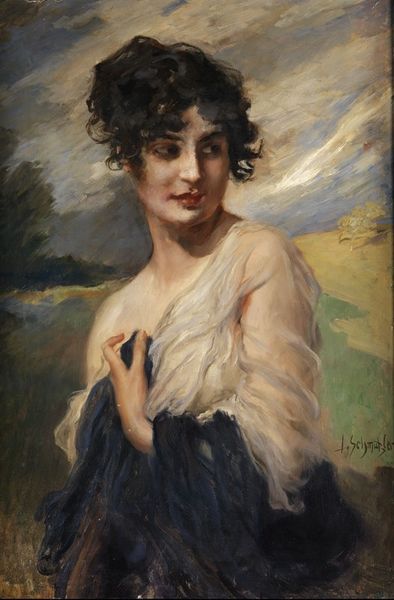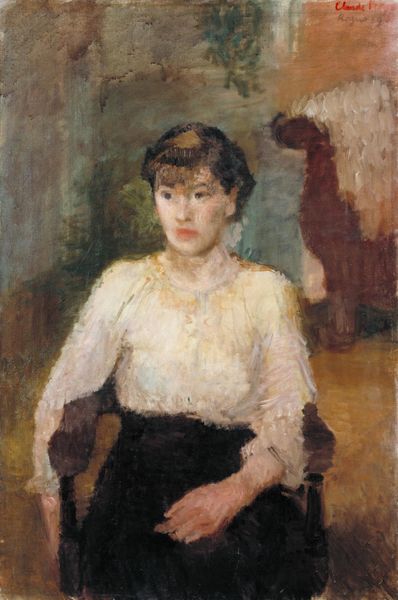
painting, oil-paint, impasto
#
portrait
#
portrait
#
painting
#
oil-paint
#
impasto
#
intimism
#
romanticism
#
genre-painting
#
modernism
#
realism
Copyright: Public domain
Editor: Robert Henri’s painting of Loretta Hines Howard is a striking portrait, and I'm immediately drawn to her confident gaze. The bold red of her dress pops against the dark background. What statements can we make by examining this artwork? Curator: The portrait is, on its surface, a product of its time, reflecting the fashion and social norms regarding women’s visibility. The sitter embodies a certain type of 20th-century femininity, yet there’s a complexity here. What does it mean, to you, that she is self-possessed and direct in her gaze? Editor: It makes me feel like she has agency. It challenges the idea of women merely being objects of beauty; there's strength in her expression. Curator: Exactly. Now, consider the context of the artist and the sitter. Henri was associated with the Ashcan School, a group that often depicted urban life. And Loretta Hines Howard herself was a significant art collector and patron. Might we interpret the portrait not only as an aesthetic exercise, but also a negotiation of power and influence within artistic and social circles? Does this shift our understanding? Editor: Absolutely! Knowing that the sitter was a patron of the arts, shifts it away from a traditional “muse” relationship into more of a collaboration, which is revolutionary. It also opens the door to conversations about women's access to both cultural and political influence. Curator: Indeed. It encourages us to interrogate conventional representations of women and acknowledge their active participation in shaping culture. Editor: I see this artwork with different eyes now, and how this painting reflects cultural shifts in both art and society. Curator: And understanding those shifts lets us find even deeper meaning and relevance today.
Comments
No comments
Be the first to comment and join the conversation on the ultimate creative platform.
